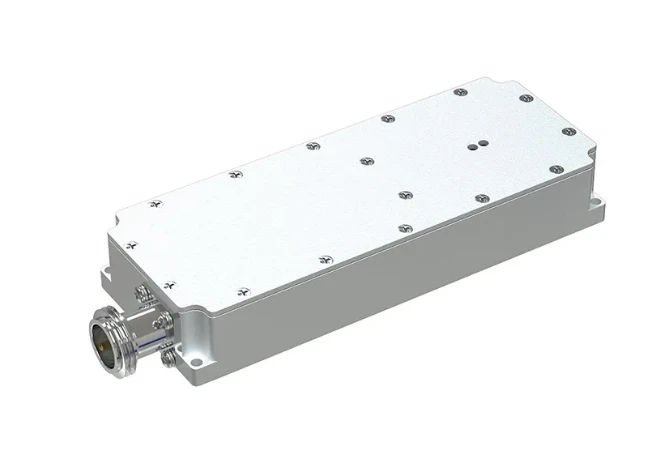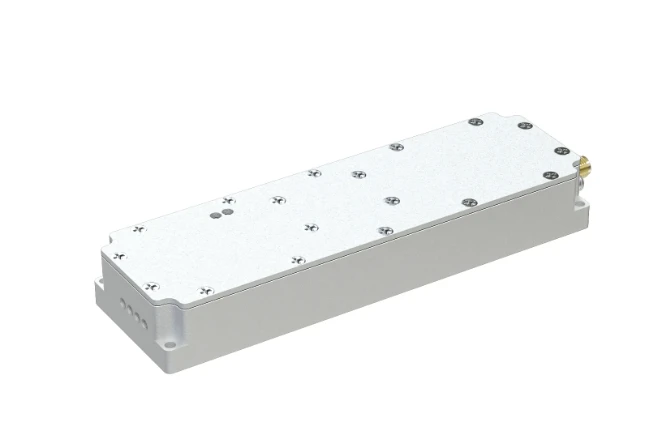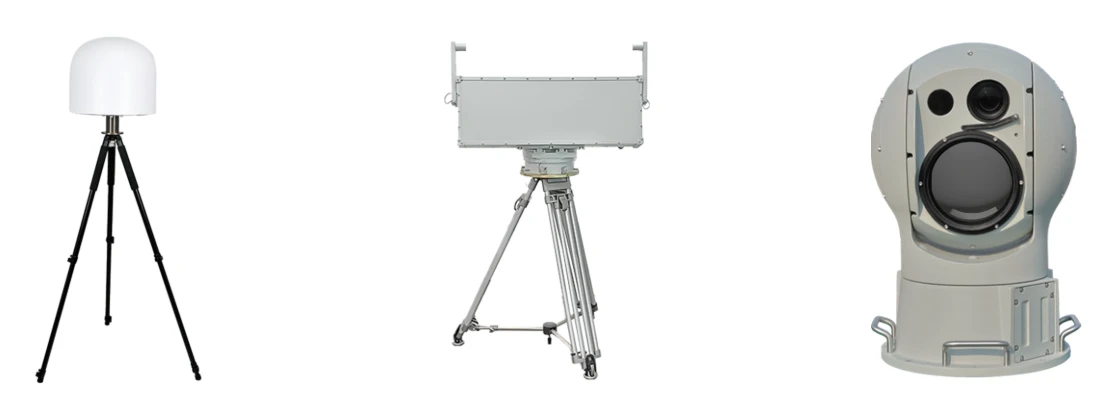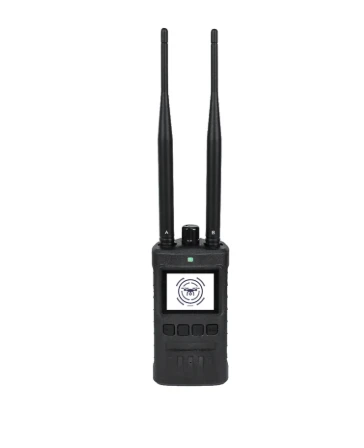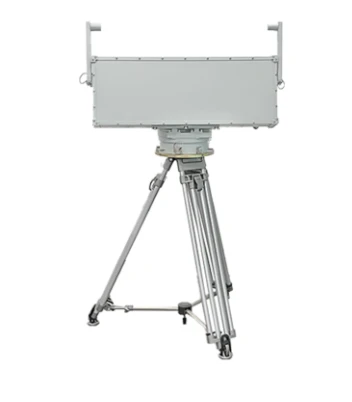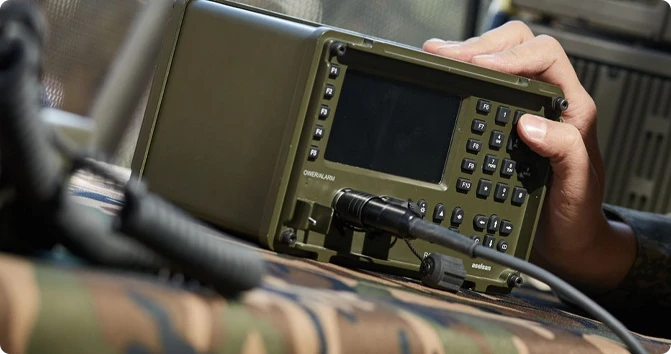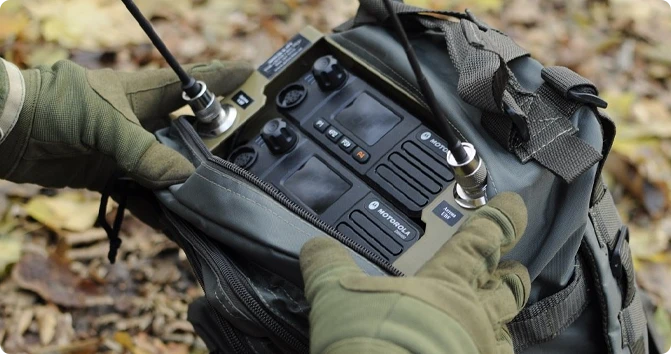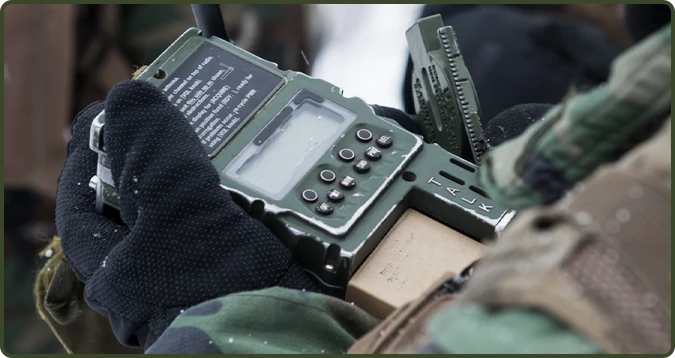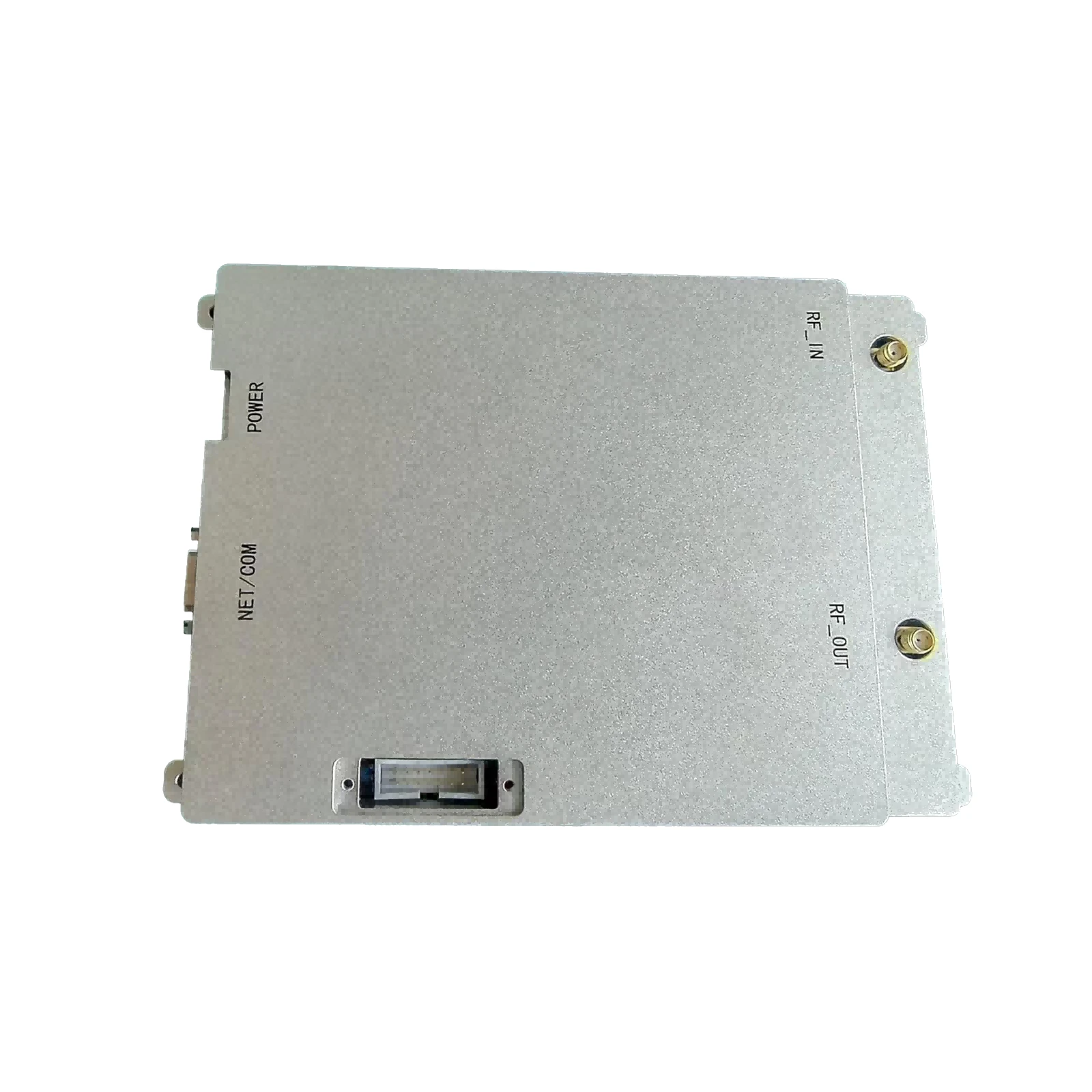Advanced 4 Frequency GPS Spoofer for Comprehensive Signal Blocking
Understanding GPS Spoofing in the Modern Era
Global Navigation Satellite Systems (GNSS) are the invisible backbone of modern infrastructure, from financial transactions and logistics to military operations and scientific research. However, their pervasive reliance also introduces vulnerabilities, particularly to malicious interference. GPS spoofing, distinct from jamming, involves generating counterfeit GPS signals that mimic legitimate ones, deceiving a receiver into calculating an incorrect position, velocity, or time. This sophisticated attack vector poses significant threats to critical systems, necessitating advanced countermeasures and a deeper understanding of counter-spoofing technologies.
The evolution of GNSS systems, incorporating multiple frequencies (e.g., L1, L2, L5, L6 for GPS, Galileo, GLONASS, BeiDou) and advanced civilian and military codes, has simultaneously elevated the complexity of spoofing and the need for multi-frequency defense. As global conflicts intensify and non-state actors gain access to increasingly sophisticated technology, the demand for robust, multi-frequency spoofing and anti-spoofing solutions has surged across defense, aerospace, and critical infrastructure sectors. This technical exposition delves into the capabilities and applications of advanced multi-frequency GPS spoofers, designed to simulate, test, and counter these evolving threats.
Introducing the Advanced 4 Frequency GPS Spoofer
Our state-of-the-art 4 Frequency GPS Spoofer represents a significant leap in GNSS signal generation and manipulation. Unlike conventional single or dual-frequency devices, this system is engineered to simultaneously generate highly accurate, synchronized counterfeit signals across four distinct GPS frequency bands: L1, L2, L5, and L6. This multi-frequency capability is crucial for effectively deceiving advanced GNSS receivers that employ sophisticated anti-spoofing algorithms relying on multi-frequency cross-correlation and integrity checks. By replicating real-world signal characteristics, including C/A code, P(Y) code (where applicable, for military-grade simulation), and M-code (for future-proof applications), it provides an unparalleled tool for research, development, testing, and countermeasure validation.
The core of this spoofer's effectiveness lies in its Software-Defined Radio (SDR) architecture, allowing for immense flexibility and adaptability. Users can programmatically control signal parameters such as power levels, pseudo-random noise (PRN) codes, navigation messages, and precise time offsets. This granular control facilitates the simulation of complex spoofing scenarios, including "takeover attacks" where the spoofer gradually increases its signal power to dominate the legitimate signal, or "false information attacks" where erroneous navigation data is injected. Its ability to operate across multiple frequencies ensures that even receivers equipped with advanced GNSS anti-spoofing techniques, such as those monitoring carrier phase alignment across different bands, can be effectively tested and challenged.
Craftsmanship and Quality Assurance: The Manufacturing Process
The production of a high-precision device like the 4 Frequency GPS Spoofer demands an uncompromising commitment to quality and advanced manufacturing processes. Our manufacturing philosophy integrates cutting-edge technology with rigorous quality control, ensuring each unit delivers superior performance and reliability. The process begins with the meticulous design phase, leveraging CAD/CAM tools for precise component layout and thermal management, crucial for high-frequency RF systems. Simulation tools are extensively used to predict signal integrity and potential electromagnetic interference (EMI) before physical prototyping begins. This digital precision minimizes iterative design cycles and accelerates time-to-market for complex systems.
Key Manufacturing Stages:
- Component Sourcing & Verification: Only high-grade, certified RF components, precision oscillators, and digital-to-analog converters (DACs) are selected from trusted suppliers. All components undergo stringent incoming quality control (IQC) checks, including electrical parameter verification and visual inspection for defects.
- Printed Circuit Board (PCB) Fabrication: Multi-layer PCBs are fabricated with specialized low-loss dielectric materials suitable for high-frequency applications, ensuring minimal signal attenuation and excellent impedance control. Gold plating is used for critical RF signal paths to enhance conductivity and corrosion resistance.
- Automated Assembly (SMT & Through-Hole): Advanced Surface Mount Technology (SMT) lines are utilized for precise placement of miniature components, followed by reflow soldering under controlled atmospheric conditions. Sensitive or high-power components are hand-soldered via through-hole techniques by certified technicians.
- CNC Machining for Enclosures: The robust enclosure, typically crafted from aerospace-grade aluminum alloy, undergoes precision CNC machining. This ensures exact tolerances for internal component fitting and provides superior electromagnetic shielding, durability, and heat dissipation, crucial for maintaining stable operation even in challenging environments.
- System Integration & Calibration: Individual modules are integrated into the main system. Each 4 Frequency GPS Spoofer undergoes multi-point calibration using calibrated reference signals to ensure output power accuracy, frequency stability, and precise synchronization across all four frequency bands. This involves complex Phase-Locked Loop (PLL) adjustments and meticulous signal analysis.
- Rigorous Testing Protocols: Every unit is subjected to a comprehensive suite of tests: functional testing, burn-in testing (24-72 hours) to identify early failures, environmental testing (temperature, humidity cycling), vibration and shock testing (e.g., to MIL-STD-810G standards), and final performance verification using spectrum analyzers and GNSS receivers to confirm spoofing efficacy and signal quality.
- Quality Control & Certification: Adherence to ISO 9001:2015 quality management systems is maintained throughout the process. Each unit is individually serialized and comes with a detailed test report. Compliance with international standards such as CE, FCC, and RoHS is verified, ensuring global applicability and safety.
This meticulous manufacturing process, combined with the use of premium materials and rigorous testing, results in a 4 Frequency GPS Spoofer with an exceptional operational lifespan and unparalleled reliability, suitable for demanding applications in sectors such as defense, aerospace, research & development, and critical infrastructure protection. The robust, anti-corrosive design (thanks to the anodized aluminum enclosure) further extends its longevity in diverse environmental conditions, including those typical in maritime or remote terrestrial operations.
Technical Specifications: A Deep Dive
The precision engineering of the 4 Frequency GPS Spoofer is best illustrated through its detailed technical specifications. These parameters define its capabilities, performance envelope, and suitability for various high-stakes applications requiring sophisticated GNSS signal manipulation.
| Parameter | Specification |
|---|---|
| Supported GNSS Frequencies | GPS L1 (1575.42 MHz), L2 (1227.60 MHz), L5 (1176.45 MHz), L6 (1278.75 MHz - for future-proof PNT services) |
| Signal Generation | Software-Defined Radio (SDR) based, configurable C/A code, P(Y) code (simulated), M-code (simulated), customizable navigation messages. Up to 12 concurrent satellite signals per frequency. |
| Output Power Range | Configurable from -160 dBm to -80 dBm (at antenna port), with 1 dB step resolution. Optimized for effective spoofing range without causing excessive interference. |
| Signal Accuracy (Position) | Sub-meter (typical, dependent on scenario and receiver) for simulated position. High precision timing synchronization capability. |
| Update Rate | 10 Hz to 100 Hz configurable, enabling dynamic trajectory simulation and rapid takeover scenarios. |
| Operating Modes | Standalone Spoofing, Assisted Spoofing (hybrid with live signals), Anti-Spoofing Research, Receiver Testing. |
| User Interface | Intuitive GUI for scenario creation, real-time control, and data visualization. API for automated integration (Python, C++ SDK). |
| Connectivity | Ethernet (Gigabit), USB 3.0, RF Output (SMA/N-Type female connectors). |
| Power Supply | 100-240V AC, 50/60 Hz; Optional 12V/24V DC for mobile applications. Power Consumption: ~150W (max). |
| Dimensions (H x W x D) | Customizable rack-mount (e.g., 2U) or portable form factor (e.g., 450 x 300 x 100 mm). |
| Weight | 5-10 kg (depending on configuration). |
| Operating Temperature | -20°C to +55°C (non-condensing); Extended range available upon request. |
| Environmental Durability | IP54 rated (dust and splash resistant); MIL-STD-810G compliant variants available. |
These specifications underscore the advanced capabilities of our 4 Frequency GPS Spoofer, making it a powerful instrument for sophisticated GNSS vulnerability assessment and countermeasure development. The inclusion of L6 frequency support anticipates future GNSS signal evolutions and ensures long-term utility for military and specialized civilian applications.
Strategic Applications and Technical Advantages
The versatility and multi-frequency capability of the 4 Frequency GPS Spoofer enable its deployment across a wide array of critical sectors, addressing burgeoning security and testing requirements.
Key Application Scenarios:
- Defense and National Security: Used for testing the resilience of military GNSS receivers, developing anti-spoofing algorithms for sensitive equipment, training personnel on counter-GPS interference tactics, and simulating real-world threat environments for unmanned aerial vehicles (UAVs), guided munitions, and naval vessels.
- Aerospace and Aviation: Essential for evaluating the robustness of aircraft navigation systems against spoofing attacks, certifying new GNSS avionics, and developing resilient flight control systems. It can simulate diverse flight paths and environmental conditions to test navigation integrity.
- Critical Infrastructure Protection: For assessing the vulnerability of power grids, telecommunication networks, financial systems, and timing synchronization services that rely heavily on GNSS for precise timekeeping. Identifying weaknesses before they can be exploited by malicious actors.
- Research & Development: Academic institutions and R&D labs utilize the system to explore new spoofing techniques, develop advanced counter-spoofing technologies, and research the effects of GNSS interference on various platforms. Its configurability allows for highly specialized experiments.
- Autonomous Vehicles: Testing the robustness and safety of self-driving cars, agricultural machinery, and robotic systems against GPS spoofing attacks that could lead to misnavigation or collision.
Technical Advantages:
- Multi-Frequency Synchronization: Simultaneous, synchronized spoofing across L1, L2, L5, and L6 frequencies effectively challenges advanced GNSS receivers designed to detect anomalies across multiple bands, a critical anti-spoofing technique.
- High Signal Fidelity: Generates highly realistic GPS signals with accurate C/A, P(Y) (simulated), and M-code (simulated) structures, enabling credible and effective spoofing simulations. This high fidelity is paramount for rigorous testing.
- Dynamic Scenario Generation: Capabilities for simulating complex, dynamic scenarios including moving targets, variable power levels, takeover attacks, and coordinated multi-spoofer operations, enhancing the realism of testing environments.
- Software-Defined Flexibility: The SDR architecture ensures future-proofing, allowing for upgrades to accommodate new GNSS signals, constellations (e.g., Galileo, GLONASS, BeiDou through software updates), and evolving spoofing techniques without hardware replacement.
- Robustness & Reliability: Engineered for continuous operation in demanding environments, with robust hardware, efficient thermal management, and comprehensive self-diagnostics.
These advantages position our 4 Frequency GPS Spoofer as a definitive solution for organizations requiring a robust, versatile, and high-fidelity tool for GNSS vulnerability assessment, countermeasure development, and operational readiness training.
Comparative Analysis: Why Our Solution Stands Out
In a market with evolving GNSS security threats, choosing the right spoofing solution is critical. Our 4 Frequency GPS Spoofer distinguishes itself through its advanced capabilities, comprehensive feature set, and unwavering reliability. Below is a comparison with other typical offerings in the market, highlighting our competitive edge.
| Feature/Attribute | Competitor A (Entry-Level) | Competitor B (Mid-Range) | Our 4 Frequency GPS Spoofer |
|---|---|---|---|
| Supported Frequencies | 1 (L1) or 2 (L1, L2) | 2 (L1, L2) or 3 (L1, L2, L5) | 4 (L1, L2, L5, L6) |
| Signal Fidelity & Codes | Basic C/A code, limited accuracy | C/A, some P(Y) simulation, moderate fidelity | High Fidelity C/A, P(Y) (sim.), M-code (sim.) |
| Dynamic Scenario Generation | Static position or simple trajectories | Limited dynamic scenarios, lower update rate | Advanced, configurable dynamic trajectories (up to 100 Hz) |
| SDR Architecture | Limited or fixed hardware | Partially SDR, limited future upgrades | Full SDR, highly flexible and future-proof |
| Anti-Spoofing Countermeasure Testing | Minimal due to limited capabilities | Moderate, basic receiver testing | Comprehensive, multi-layer anti-spoofing testing |
| Customization & Integration | Limited API, fixed configurations | Some API, minor customization | Extensive API/SDK, tailored solutions, rack-mount/portable options |
| Industry Certifications | Basic CE/FCC | Standard industry compliance | ISO 9001, CE, FCC, RoHS, MIL-STD-810G (optional) |
| Price Point (Relative) | Lower | Medium | Premium (Value-driven by capability) |
This comparison clearly demonstrates the superior capability and long-term value offered by our 4 Frequency GPS Spoofer. While entry-level solutions might suffice for basic testing, complex and critical applications demand the advanced fidelity, multi-frequency support, and flexibility that only a premium solution can provide.
Custom Solutions and Integrated Services
Recognizing that no two projects are identical, we offer comprehensive customization options and integrated services to ensure our 4 Frequency GPS Spoofer perfectly aligns with your specific operational requirements. Our engineering team possesses deep expertise in RF systems, GNSS signal processing, and real-time control, enabling us to adapt the spoofer's capabilities to unique challenges.
From tailoring specific waveform characteristics and power outputs to developing bespoke software interfaces and integrating with existing testbeds, our approach is client-centric. We can provide API/SDK documentation and support for seamless integration into larger simulation environments or automated testing frameworks. Furthermore, we offer specialized training programs for your technical teams to maximize their proficiency in operating and optimizing the spoofer for your applications. Our commitment extends beyond product delivery, encompassing long-term technical support, software updates, and calibration services to ensure sustained peak performance throughout the product's lifespan. Our service model is designed to foster enduring partnerships, providing not just a product, but a complete solution tailored to your evolving needs.
Client Success Stories & Testimonials
Our advanced GNSS solutions have empowered leading organizations globally to enhance their security posture and accelerate R&D. While specific project details remain confidential due to the sensitive nature of our work, the impact of our 4 Frequency GPS Spoofer can be illustrated through generalized scenarios and client feedback:
- Defense Contractor, North America: "The multi-frequency capability and the high fidelity of the simulated P(Y) code allowed us to rigorously test our next-generation military GNSS receivers against sophisticated spoofing attempts. The system's flexibility in scenario generation significantly reduced our development cycle by identifying vulnerabilities early."
- Aerospace Research Institute, Europe: "Integrating the spoofer into our flight simulation lab provided an invaluable tool for evaluating avionics resilience. We particularly appreciated the intuitive API, which facilitated seamless automation of complex test routines for our autonomous aircraft platforms."
- Critical Infrastructure Operator, Asia: "With increasing concerns over GNSS dependency, the 4 Frequency GPS Spoofer enabled us to conduct comprehensive vulnerability assessments on our timing synchronization systems. The support team's expertise in tailoring the output characteristics was exceptional."
These experiences underscore our commitment to delivering not just a product, but a strategic asset that addresses the most challenging GNSS security and testing requirements. Our solutions are designed to provide actionable insights and reinforce confidence in your GNSS-dependent operations.
Frequently Asked Questions (FAQ)
To provide further clarity and build trust, here are answers to some common questions regarding our 4 Frequency GPS Spoofer:
-
Q: What is the primary difference between GPS jamming and spoofing?
A: GPS jamming involves broadcasting high-power noise to overwhelm legitimate GNSS signals, preventing receivers from acquiring a lock. GPS spoofing, conversely, broadcasts carefully crafted, fake GNSS signals designed to mimic real ones, thereby deceiving the receiver into calculating an incorrect position or time without necessarily losing signal lock. Our 4 Frequency GPS Spoofer specializes in the latter, providing precise control over the simulated signals.
-
Q: Can the spoofer simulate multiple GNSS constellations beyond GPS?
A: While the base unit focuses on 4 GPS frequencies (L1, L2, L5, L6), its Software-Defined Radio (SDR) architecture allows for potential future expansion to other constellations (e.g., GLONASS, Galileo, BeiDou) through software upgrades or modular hardware additions, depending on specific project requirements and licensing agreements. Contact our technical sales for detailed customization options.
-
Q: What kind of technical support is offered?
A: We offer comprehensive technical support including initial setup assistance, remote diagnostics, software updates, and a dedicated support channel for troubleshooting. Our team of expert engineers is available to provide guidance on scenario creation, data analysis, and system optimization. Service level agreements (SLAs) can be customized to meet your operational needs.
-
Q: Is the 4 Frequency GPS Spoofer legal for use?
A: The legality of using GPS spoofing equipment varies significantly by jurisdiction and intended purpose. Our 4 Frequency GPS Spoofer is designed and marketed strictly for legitimate, authorized uses such as research, development, testing, and military/government applications under appropriate legal frameworks. It is the responsibility of the end-user to ensure compliance with all applicable local, national, and international laws and regulations regarding the sale, purchase, import, export, and operation of such devices.
Delivery & Warranty
We understand the critical nature of timely delivery for specialized equipment. Our typical lead time for the 4 Frequency GPS Spoofer ranges from 4 to 8 weeks, depending on the specific configuration and customization requirements. Expedited delivery options may be available upon request for urgent projects. All units undergo rigorous final testing and quality checks before dispatch.
Each 4 Frequency GPS Spoofer comes with a standard 12-month warranty covering manufacturing defects and hardware malfunctions. Extended warranty options, including comprehensive service plans and calibration agreements, are available to ensure uninterrupted operation and peace of mind. Our commitment to post-sales support ensures your investment is protected and continues to perform optimally for its entire lifespan.
References
- Misra, P., & Enge, P. (2011). Global Positioning System: Signals, Measurements, and Performance. Ganga-Jamuna Press. (General reference for GNSS fundamentals)
- Humphreys, T. E., et al. (2008). Assessing the Spoofing Threat to GPS Civil Navigation. ION GNSS 2008 Proceedings. (Specific reference on GPS spoofing threats)
- Scott, L. (2016). GPS and GNSS: Interception, Jamming, and Exploitation. Artech House. (Provides insights into signal manipulation)
- Official Publications from the International Organization for Standardization (ISO) and Institute of Navigation (ION) for quality and navigation standards.
-
09 March 2021 07 Jul 2025
-
09 March 2021 07 Jul 2025
-
09 March 2021 07 Jul 2025
-
09 March 2021 07 Jul 2025
-
09 March 2021 07 Jul 2025
-
09 March 2021 21 May 2025
-
09 March 2021 25 Dec 2024
-
09 March 2021 14 Oct 2022
-
09 March 2021 25 Dec 2024



